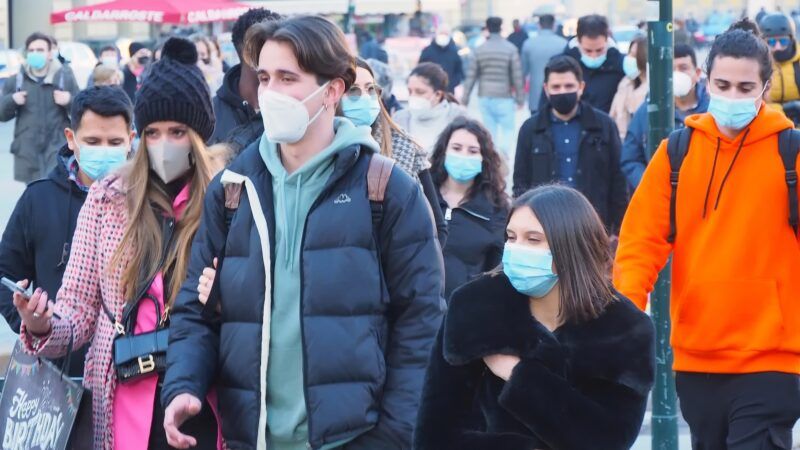CDC: 61% of Teenagers Hospitalized for COVID-19 Had Obesity
A new study of 915 childhood COVID-19 hospitalizations found that most involved underlying conditions.

One of the only silver linings of the pandemic has been that young people are less affected by COVID-19 than the elderly. In fact, the most vital indicator of negative COVID-19 outcomes is age: Unlike the Spanish flu, which ravaged armies that were overwhelmingly comprised of otherwise healthy young people during World War I, COVID-19's death toll is dramatically skewed toward those who have already lived many years. (For context, the average age of death from Spanish flu was 28.)
That said, about 600 Americans under the age of 18 have died of COVID-19 during the pandemic. A new study from the Centers for Disease Control and Prevention (CDC) took a closer look at young people who were hospitalized for COVID-19 in July and August, while the delta variant wave took hold, and largely found that healthy young people continue to mostly evade the worst of COVID-19.
The study found that most young people who suffer severe COVID-19 outcomes had underlying health conditions. The most common, especially for teenagers, was obesity.
"Among patients aged 12–17 years, 61.4 percent had obesity," according to the study, "60.5 percent of whom had severe obesity."
The study looked at six U.S. hospitals—all of them in the American South—and evaluated 915 cases of COVID-19 in adolescents that required hospitalization. The vast majority were hospitalized for COVID-19, though some had other infections as well. Of the 713 patients who were primarily hospitalized for COVID-19, two-thirds had at least one underlying health condition. For the teenage cohort—patients at least 12 years of age—the obesity rate was 61.4 percent. The severe obesity rate was 60.5 percent. Just one of the eligible patients had been vaccinated, and 11 patients died in total.
What this means, of course, is that COVID-19 can be a fatal disease, even for young people—but vaccine status and general health are extremely important variables. It remains the case that healthy children who do not have underlying health conditions—particularly obesity—are by and large safe from negative COVID-19 health outcomes.
"Compared with patients without obesity, those with obesity required higher levels and longer duration of care," wrote the study's authors. "These findings are consistent with previous reports and highlight the importance of obesity and other medical conditions as risk factors for severe COVID-19 in children and adolescents."
One of the best ways to guard against obesity is to encourage healthy eating and active lifestyles among the youth population. Exercise is not a panacea, but kids who play sports or engage in physical activity are less likely to become obese. Physically active kids tend to have better diets than those who stay indoors all day, glued to their screens.
It's important to perform this reality check—the more healthy and active kids are, the less COVID-19 threatens them—given just how much the lives of young people were upended by pandemic mitigation efforts. In the name of slowing COVID-19's spread, public health authorities closed schools, shuttered extracurricular activities, and instructed young people to remain by themselves, indoors. Even benign activities like playing at the park were discouraged for the first few months of the pandemic. And while many activities have resumed, some college campuses (for instance) would rather their student populations quit sports than dare to do them unmasked.
Those who have rule-making power over young people would be well-advised to consider whether the purported cure is worse than the disease—and whether it actually makes the disease more dangerous for some. Young people need socialization and activity. They need a reason to put down their smartphones and venture out into the world. It is not in the interests of public health to keep them shut up in their bedrooms and dormitories for long periods of time.
As the super infectious—though seemingly more mild—omicron variant threatens to force public health officials to re-implement stringent mitigation measures, that's worth keeping in mind.
*CORRECTION: The headline of this piece has been corrected. Of the hospitalized teenagers in the study, 61 percent were obese, and another 61 percent of those patients had severe obesity.


Show Comments (249)